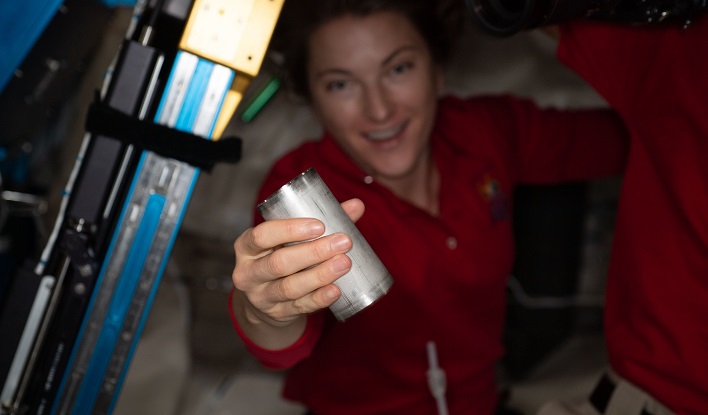NASA Details ISS Tech That Recycles 98% Of Astronaut Urine Into Drinkable Water

NASA will soon be sending humans further into space for extended stays than ever before with its Artemis missions. Artemis will focus first on the Moon, but the space agency is already planning for trips to Mars as well. In order for those long journeys to be possible, astronauts need to be assured they have the basics for being able to live. That is exactly what current astronauts have been testing with the space station's Environmental Control and Life Support System (ECLSS).
"This is a very important step forward in the evolution of life support systems," remarked Christopher Brown, part of the team at Johnson Space Center that manages the space station's life support system. He explains, "Let's say you collect 100 pounds of water on the station. You lose two pounds of that and the other 98% just keeps going around and around. Keeping that running is a pretty awesome achievement."
NASA says ECLSS is a combination of hardware that includes a Water Recovery System. The system not only collects and recycles wastewater into drinkable water, but also uses a specialized component that is able to capture moisture released into the cabin air from the crew's sweat and breath.
The recycling process also includes a subsystem called the Urine Processor Assembly (UPA), which recovers water from the astronaut's urine using vacuum distillation. Improvements to the UPA's Distillation Assembly have added the ability to produce water and a urine brine that still contains some reclaimable water. A Brine Processor Assembly (BPA) has also been developed in order to extract the remaining wastewater on the space station.
"Before the BPA, our total wastewater recovery was between 93 and 94% overall," remarked Jill Williamson, ECLSS water subsystems manager. "We have now demonstrated that we can reach a total water recovery of 98%, thanks to the brine processor."
In order to achieve its intended goal, the BPA takes brine produced by the UPA and then runs it through a special membrane technology "that blows warm, dry air over the brine to evaporate the water." The process produces humid air, which is collected by the ISS's water collection system. This is similar to how the crew's breath and sweat are used as well.

The team admits that the thought of drinking recycled urine makes some people a bit queasy. However, they stress that the end result is "far superior" to what we all drink here on Earth.
"The processing is fundamentally similar to some terrestrial water distribution systems, just done in microgravity," explains Williamson. She adds that the crew is not actually drinking urine, but rather water that has been reclaimed, filtered, and cleaned to a point where it is "cleaner than what we drink here on Earth."
Williamson says the importance of ECLSS has become extremely important as humans go beyond low Earth orbit. Being unable to ship resources to astronauts during exploration as often, or at all, means NASA and other space agencies need to be able to reclaim those all-important resources for the needs of the crew. The ability to recycle those resources gives the astronauts onboard the capability to stay focused on the mission at hand and not be concerned about how they are going to survive.

